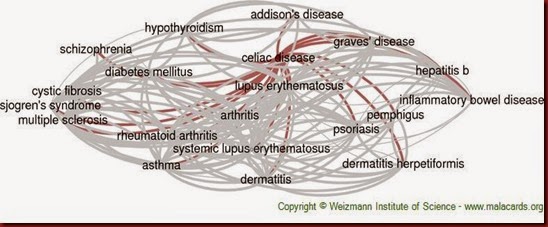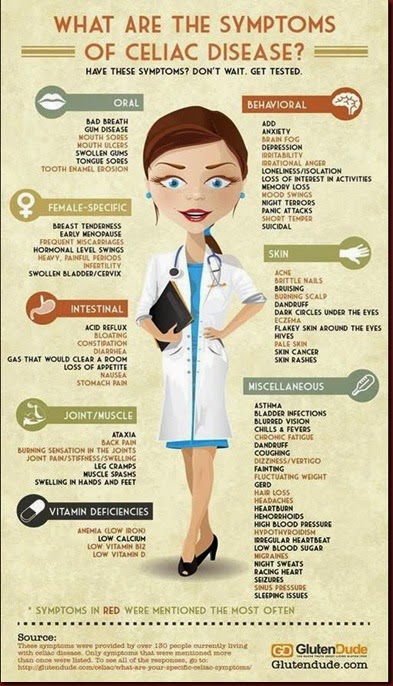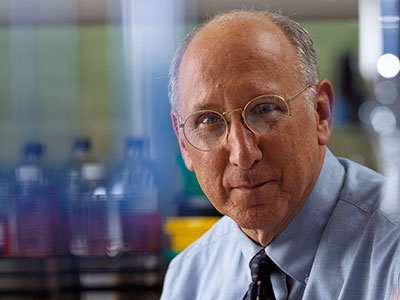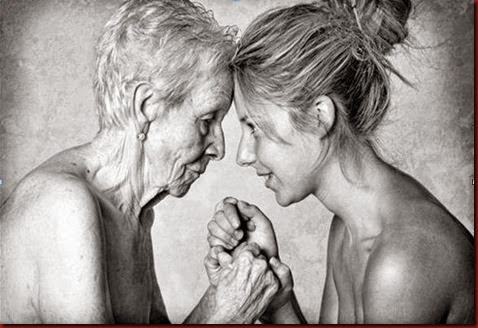“Who controls the food supply controls the people; who controls the energy can control whole continents; who controls money can control the world.” - Henry Kissinger
In 1974, Henry Kissinger suggested using food as a weapon to induce targeted population reduction in a previously classified 200-page report, National Security Study Memorandum 200: Implications of Worldwide Population Growth for U.S. Security and Overseas Interests.
By Marion Algier
The American food supply has been tainted with genetically modified corn, wheat and soy; antibiotics and steroids given to our meat supply, chemical fertilizers, frightening food additives and flavor enhancers and the list goes on. Many countries around the world will not by our agricultural products or package foods because of it. But many Americans are just finding out about what affect Big Agri and Big Business are having on their food and in turn their health.
10-years ago virtually nobody had heard for gluten, GMO’s or Celiac Disease. Now it seems to be the health topic of the year. So where did this come from and what really is Celiac Disease?

Through the process of creating genetically modified wheat, the protein gluten has increased 10 fold. Our bodies are good a adapting but not to such large quantities in such a short time.
Celiac disease, also known as coeliac disease, is an autoimmune disorder that affects around 1 in 100 Americans. The disease is caused by gluten intolerance. Gliadin, a protein in wheat, causes the afflicted persons immune system to attack its own bowel tissue. This causes villous atrophy, or the erosion of the nutrient absorbing villi that line the small intestine. Other grains, like barley and rye, have similarly shaped proteins which can cause the same reaction in sensitive individuals.
Celiac disease can cause irreversible damage.
Testing for celiac disease is done through blood tests and endoscopy. It is important for the afflicted person to continue eating gluten while they are tested for celiac disease. When they remove gluten from their diet, their body starts to repair itself, giving a false negative for the tests.
Celiac disease can cause a multitude of problems. The major ones come from malabsorption of nutrients. This can lead to osteoporosis, anemia, and stunted growth in children. Those who suffer from celiac disease are also more likely to develop non-Hodgkin lymphoma when compared to the general population. The best way to protect yourself and minimize your risk is early diagnosis and strict diet.
The symptoms can range from no symptoms at all to excruciating pain, chronic fatigue and deterioration of the sufferers body in many areas including the development of various cancers.
!0 major symptoms of Celiac Disease:
1. No Symptoms
Unfortunately, many people who suffer from celiac disease have no symptoms. This is particularly dangerous as intestinal damage can occur even when no symptoms are present. With new screening techniques, people are being diagnosed without ever suspecting they have the disease. It is important for people with no symptoms but a positive diagnosis to eat properly, as they are still at risk for serious complications of celiac disease, such as cancer.
2. Bloating
 Many people who have celiac disease suffer from painful bloating. For days after consuming gluten, the stomach may be distended and filled with gas. This can be quite painful. Many people complain of intestinal pain and the feeling of being “6 months pregnant”. They may also suffer from excessive gas and flatulence. Bloating can be symptoms of other dietary conditions, so look for it in conjunction with the consumption of gluten. The pain can radiate to other organs and down the extremities making diagnosis difficult without testing.
Many people who have celiac disease suffer from painful bloating. For days after consuming gluten, the stomach may be distended and filled with gas. This can be quite painful. Many people complain of intestinal pain and the feeling of being “6 months pregnant”. They may also suffer from excessive gas and flatulence. Bloating can be symptoms of other dietary conditions, so look for it in conjunction with the consumption of gluten. The pain can radiate to other organs and down the extremities making diagnosis difficult without testing.
3. Diarrhea
Chronic diarrhea is a common symptom of those afflicted with celiac disease. The episodes may be smelly, explosive, and painful. The color of the stool may be pale or white, and typically floats on the surface of the water. Even solid stools may present these conditions. Related symptoms to chronic diarrhea include hemorrhoids. These can occur when there is not enough substance in the stools.
4. Constipation
While diarrhea is common in celiac sufferers, some people may be afflicted with constipation. This if from the body sluggishly moving the contents of the bowels. The body may be trying to pull all the nutrients possible from the food as the damaged villi will not work as efficiently. The constipation may be marked by periods of heavy diarrhea as the person consumes gluten. The constipation may cause pain and bloating.
5. Weight Loss or Gain
Many people who suffer from celiac disease lose weight as their body reacts to the missing nutrients. The diarrhea caused by gluten may stall the absorption of calories from the food, purging the body from its fuel. Conversely, a sufferer may in fact gain weight instead of lose it. Their bodies may be screaming for nutrients, so they eat in excess to achieve proper nutrition. They may have a hard time losing weight until they restrict gluten from their diet.
6. Fatigue
Fatigue is a common complaint of those affected by celiac disease. Undiagnosed celiac suffers may have their bodies suffer from malnutrition caused by absorption issues. Their body will respond with extreme fatigue and malaise in response. They may crave sugary foods and drink excessive caffeine just to stay energized. After diagnosis and the removal of gluten from the diet, fatigue may be the first symptom to be eliminated
7. Trouble Concentrating
People who suffer from celiac disease may experience something called a “brain fog” in relation to the consumption of gluten. This symptom exhibits immediately after eating gluten and can persist for days. The feeling that it gives is confusion, trouble concentrating, and short term memory loss. A sufferer may forget to pick your children up from school, or even forget what they are writing mid sentence. Thankfully, this symptom does not persist as a person removes gluten from their diet. It may even make them feel finally awake after years of fogginess.
8. Problems Falling and Staying Asleep
Recent studies have found that patients with celiac disease commonly suffer from disordered sleeping, regardless of if the rest of their diet is healthy or not. Sleep disorders are more common to those suffering from celiac disease vs. the rest of the general population. The disordered sleeping can be shown through an inability to fall asleep, and being unable to stay asleep. The study found that the causes of the inability to sleep well include depression, fatigue, and anxiety.
9. Numbness and Tingling
Many celiac sufferers exhibit neuropathic symptoms. Problems with the neuropathic system can affect gross and fine motor control and sensory nerves. An undiagnosed celiac disease sufferer my find their extremities exhibit nerve problems. This can include a tingling sensation in the hands and feet, ranging from mild to “fallen asleep”. Conversely, they may not feel anything in their hands and feet, as numbness is a common complaint. Other parts of the body may be affected, such as the facial muscles and body nerves.
10. Depression
Unfortunately, depression and suicide rates are higher in people with celiac disease. Studies have found that even eating a gluten free diet, the rates of depression are much higher than the general population. One study found a connection between disordered eating and depression in women who suffer from celiac disease. As they closely monitor their foods for gluten, disordered and restrictive eating can develop. For suicide risk, it seems that once diagnosed and with dietary changes, the suicide risk is greatly reduced.
Other symptoms include:

Celiac Disease vs. Gluten Intolerance
More people have undiagnosed gluten intolerance than any other disorder, according to the nonprofit support organization Gluten Intolerance Group. It is a hidden epidemic. The symptoms of celiac disease, which affects an estimated 2 million Americans, and gluten intolerance are similar but vary from person to person. Many experience abdominal discomfort, nausea and diarrhea. If you suspect you are gluten intolerant, ask your doctor to do blood work and a diagnostic analysis to rule out celiac disease. Always follow your doctor's dietary recommendations and restrictions.
Although celiac disease and gluten intolerance have similar symptoms, the primary difference between the two conditions is that celiac disease involves your immune system and causes long-term damage to the villi that line your small intestine, according to the National Institutes of Health. In contrast, gluten intolerance is a digestive tract reaction that causes you to experience a variety of gastrointestinal discomforts. Your doctor will likely run an antibody test to determine whether you have celiac disease. If the test results are negative, it is likely that you have a gluten intolerance rather than celiac disease. As with celiac, removing gluten from your diet can ease the uncomfortable symptoms often associated with gluten intolerance.
Foods to Avoid:
Celiac disease involves a systemic reaction to gluten. For patients diagnosed with Celiac disease, the ingestion of any product that contains gluten causes immediate harm to the intestines. The warning includes not only food, but anything that may have come into contact with gluten: utensils, bowls, toasters, storage contains, shared knives, cutting boards and even crumbs for products that contain gluten.
The number 1 rule for sufferers of celiac disease and gluten intolerance is no wheat products and rye and barley also contain higher levels of gluten.
Gluten is most commonly found in both white and wheat flour and is therefore used in a lot of different food products including breads, baked goods, cereals, pastas, and pizza dough. You will need to begin a habit of reading all labels to ensure that it is gluten-free. Just because something is packaged as wheat-free, does not necessarily mean it is gluten-free. You can substitute all of the above mentioned food items with any that are made with rice or almond flour.
You can substitute all of the above mentioned food items with any that are made with rice or almond flour.
Other food items that you need to avoid include: barley (including malt), rye, bulgur and spelt. Substitutions in your diet can include: rice, corn, buckwheat, amaranth, millet, tapioca and quinoa. Many dairy products contain gluten, so again, read the labels for consuming. Almond Breeze is a good substitute for milk. If you enjoy the occasional beer, you need to be extra careful because many beers and spirits are made with rye and malt. Look for those that are gluten-free.
If you enjoy gravies, condiments and dressings, examine the label for contents and instead use oils, vinegars and any gluten-free substitutes. When it comes to the topics of meats, stay as far away from any processed meats as possible. Substitute with fresh meats that include, chicken, turkey, pork, fresh fish, lamp and shellfish.
Don’t be drawn in by the healthy look of granola and energy bars, they also are packed with gluten.
Manufactured FOODS List generated by Fox Valley Celiacs (FVC); is intended for the benefit of its members and other interested parties. Some celiacs may have other sensitivities (e.g. corn or soy).
(This a safe list for sufferers of celiac disease and gluten intolerance but some of the products below may contain ingredients not good for other conditions or general health.)
Bacon― Oscar Meyer, Hormel
Baked Beans― B & M, Bush’s
Baking Chips― Nestle, Hershey’s Semi-Sweet Chocolate Chips
Baking Powder― Calumet, Rumford
Barbecue Sauce― Saz’s, Sweet Baby Rays (all)
Beans― Bush’s (not chili beans or chili starter)
Beef Stew― Dinty Moore
Broth/Soup Base― Kitchen Basics, Progresso, Swanson’s
Cold Cuts (packaged) ― Boar’s Head (Bologna, Ham, Roast Beef, Turkey), Buddig Sandwich Meats, Oscar Mayer, Hormel Natural Choice Deli meats
Bouillon Cubes― Herb-Ox
Candy Bars― Snickers, Almond Joy, Mounds, Payday, M & M’s - plain & peanut, Baby Ruth, Reese�s Peanut Butter Cups (except when in holiday shapes), Hershey Kisses, Butterfinger
Catsup― Heinz & Del Monte
Cheese― Frigo String, Hard Cheeses
Chili― Hormel with Beans
Chips― Cheetos, Cool Ranch Doritos, Corn Tostitos, Fritos (except Chili Cheese), Ruffles, Lundgren,
Coffee & Tea― (flavored may contain gluten, check labels)
Cottage Cheese― Morning Glory, Kemps
Crab― Leg-A-Sea Imitation
Cream Cheese― Philadelphia Cream Cheese
Cream Style Corn― Green Giant
Dips― Okedoke Chili Con Queso, Kemps, Simply Organic Ranch
Dry Cereal― Erewhon’s Crispy Brown Rice; Health Valley Rice Crunch Ems, Corn Crunch Ems; General Mills Rice Chex (12.8-oz. only); Nature’s Path Cornflakes, Amaranth Flakes; Envirokidz Peanut Butter Panda Puffs, Amazon Frosted Flakes, Koala Crisp, Gorilla Munch; Perky O’s
Dry Soup Mix― Lipton Dry Onion
Eggs
Fruit― Canned, fresh
Gelatin― Jell-O, Knox
Gluten-Free Frozen Dinners― Amy’s Enchilada
Ground Beef ― 100% Pure
Ham Slices― Cook’s, Oscar Meyer
Hot Dogs― Hillshire, Oscar Meyer
Ice Cream (no cookie dough) ― Blue Bunny, Edy’s, Breyers
Jams, Jellies & Preserves― Smucker’s, Welch’s
Mayonnaise― Hellmann's Real, Kraft
Mustard― French’s, Gulden’s, Grey Poupon
Nuts― Plain
Oil― Olive, Peanut, Canola, Safflower, Corn
Olives
Pasta― Tinkyada, De Boles, Lundgren
Peanut Butter― Jif, Peter Pan, Skippy
Pepperoni― Hormel
Powdered Drink Mixes― Country Time, Crystal Light
Pudding― Jell-O Instant, Cook & Serve
Pasta Sauces― Prego, Ragu, & Pace are being tested for gluten-free certification. Check labels.
Pickles― Vlasic
Pie Fillings― Comstock & Wilderness
Pizza Sauce― Contadina, Dei Fratelli
Popcorn― Plain
Raisins― Dole, Sun Maid
Rice― (plain) Basmati, Jasmine, white, brown, wild
Rice Cakes― Lundgren
Rice Noodles― Thai Kitchen Instant
Salad Dressings― Kraft (label will state allergens)
Salads in a Bag― (with no croutons or dressing)
Seasoned Salt― Lawry’s
Seasoning Packet― Original Chex Mix
Soda― Barq’s Root Beer, Coke & Pepsi Products
Soft Serve Ice Cream (in a cup) ― McDonald’s (all flavors), Dairy Queen (vanilla and chocolate)
Soups― Progresso (many are gluten-free. Ingredient label will state allergens), Thai Kitchen Soups
Sour Cream― Daisy, Kemps, Morning Glory
Soy Sauce― La Choy
Spices― McCormick Pure
Spreads― *Butter, (the best option unless you can’t eat butter for another reason) Brummel & Brown, Blue Bonnet, Country Crock, Fleischmann’s, Imperial
Summer Sausage― Johnsonville, Old Wisconsin, Hillshire
Syrups― Karo
Taco Sauce― Chi Chi
Taco Shells― Ortega Tostada, White Corn
Tomato Products― Red Gold
Tuna― Chicken of the Sea, StarKist (but watch out for the mercury)
Vegetables― Fresh, canned (plain)
Waffles― Van’s Gluten-Free Frozen
Worcestershire Sauce― French’s
Yogurt― Yoplait, Stonyfield Farms, Dannon (plain), several of the Greek yogurts are gluten free
Wal-Mart Great Value brand items produced in a gluten-free facility will be labeled gluten free.
NON-FOOD ITEMS
Toothpaste― Colgate, Crest
Lip Balm― Blistex, Burt�s Bees, ChapStick
Lipstick― Burt’s Bees
There is a great cookbook by Elizabeth Hasselbeck: Deliciously G-Free: Food So Flavorful They'll Never Believe It's Gluten-Free
Also see: The Gluten-Free Bible, Celiac Disease, Second Edition: A Guide to Living with Gluten Intolerance, Real Life with Celiac Disease and Celiac Disease For Dummies.
Reproduction of this material is allowed to facilitate the exchange of celiac information. Food manufacturers' products are subject to formula change at any time. If you cannot confirm, by the label, that a product is gluten free, call the company's toll-free number. Many company websites will list their gluten-free products. A more inclusive list of gluten-free items can be found at www.glutenfreeinsd.com , which is also associated with CSA. ALWAYS read labels.
Jennifer Espisito from the TV show Blue Bloods was fired because she suffered from Celiac Disease. She wrote: Jennifer's Way: My Journey with Celiac Disease -- What Doctors Don’t Tell You and How You Can Learn to Live Again
It is also becoming ever clearer that gluten, GMO’s and vaccines are part of the AD, ADD, ADHD, Autism, Aging… Inflammation and Nutrition Connection
Related:
Monsanto Battle Continues After Suing Midwest Farmers for Saving Seeds
Whole Foods Market Takes Huge Stand Against GMOs: Mandatory Labeling by 2018
GMO Scandal: The Long Term Effects of Genetically Modified Food on Humans
Codex Alimentarius – How The Global Elite Will Control Your Food Supply…
 Scanning electron micrograph of a human T lymphocyte (also called a T cell) from the immune system of a healthy donor. Source: National Institute of Allergy and Infectious Diseases (NIAID).
Scanning electron micrograph of a human T lymphocyte (also called a T cell) from the immune system of a healthy donor. Source: National Institute of Allergy and Infectious Diseases (NIAID). 



















